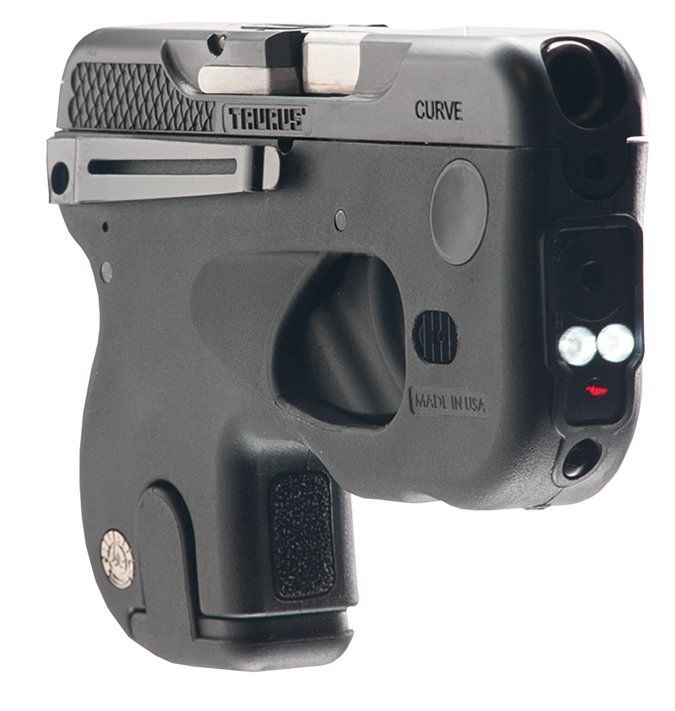
LCP-C And Taurus Curve Shoot
It Out,” October 2015
The Curve’s lack of sights should not necessarily be an unsolvable problem. With sufficient practice, one need only see the silhouette of the rear end of the pistol to make accurate, close-range shots. But it requires lots of practice, and it also requires a fairly accurate pistol. Evidently, the Curve isn’t one of those.
Also, the Curve’s belt clip is very much in the wrong place. It buries the pistol so deeply into one’s pants as to make a quick, effective presentation almost impossible. The quickest, most effective self-defense presentation requires that the pistol user establish a full firing grip on the gun, before beginning the draw stroke. You can’t do that with a clipped-on Curve.
Finally, one must be very careful how one uses the Curve’s light. A gun-mounted flashlight must not be used for searching, for instance before entering a dark room. Imagine your dismay when, as you illuminate the “bad guy” with your pistol’s muzzle, you find that you are about to shoot at your daughter, returning late from a date.— Steve
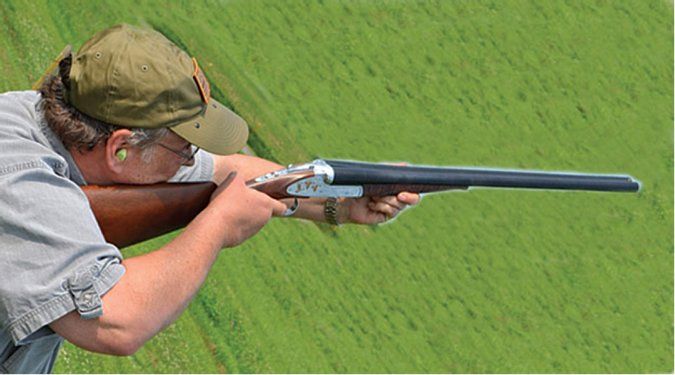
Double-Barrel Pump, and
Tri-Barrel Guns,” October 2015
I enjoyed the article on the T. R. Imports Silver Eagle Ptarmigan. I have owned three Silver Eagle semi-autos, so I thought it would be nice to run a comparison using a Silver Eagle Sporter 12 gauge (one piston) against maybe a Tristar and another low-cost semi-auto 12 gauge. The price is quite affordable at Dick’s or Dunham’s stores when they are on sale. They look great, and you get Turkish walnut stocks and chromed barrels and bolts. You will find they are fast shooters on clays or upland game using 2.75-inch loads.
— Robert
Why so many people recommend buckshot is silly to me. It has a very limited range. It does not penetrate that well. It is highly overrated. My uncle, who is a 97-year-old hunter uses BB’s on fox and such critters. He once took a fox at 104 steps, and the BB’s went clean through the fox. Foxes often raid chicken yards and coops in the Midwest, so they are fair game. His Remington 870 goose gun in full choke and 30-inch barrel is very effective. Peter Hathaway Capstick likewise did not use 00 buck. He used smaller buckshot, which was more effective. Popular opinion is not always correct. It is often based on hearsay rather than facts. Thanks again for your fine magazine.— Tom
What a curious article this was! You compared a 28-inch-barreled double gun with two 18-inch-barreled defense/tactical shotguns. A more valid comparison would have been the Kel-Tec KSG versus the UTS-15 versus the DP-12. We are a retail gun store, and folks that we sell the DP-12 to have not the slightest interest in performance on clay pigeons! Also, the only reason to use #8 or #9 shot in a defensive shotgun is as an alternative to more traditional 00 buckshot or slugs used in tactical shotguns. These defensive shotguns are not purchased to bust clays. You did not like the weight of the DP-12, but remember that the weight also dampens the recoil of firing buckshot and slugs. And you failed to mention the spring-loaded recoil pad of the DP-12, which also dampens recoil. Considering the up-and-down online reviews of the UTAS, we would hope that Gun Tests could compare the three guns mentioned above at some later date, as there is lots of interest in the tactical shotgun right now.
Both the UTAS and the KSG have had some growing pains, and it would be interesting to see how the latest generation of each of these guns performs against the DP-12.
— Jim @ Arias Artifacts, Inc.
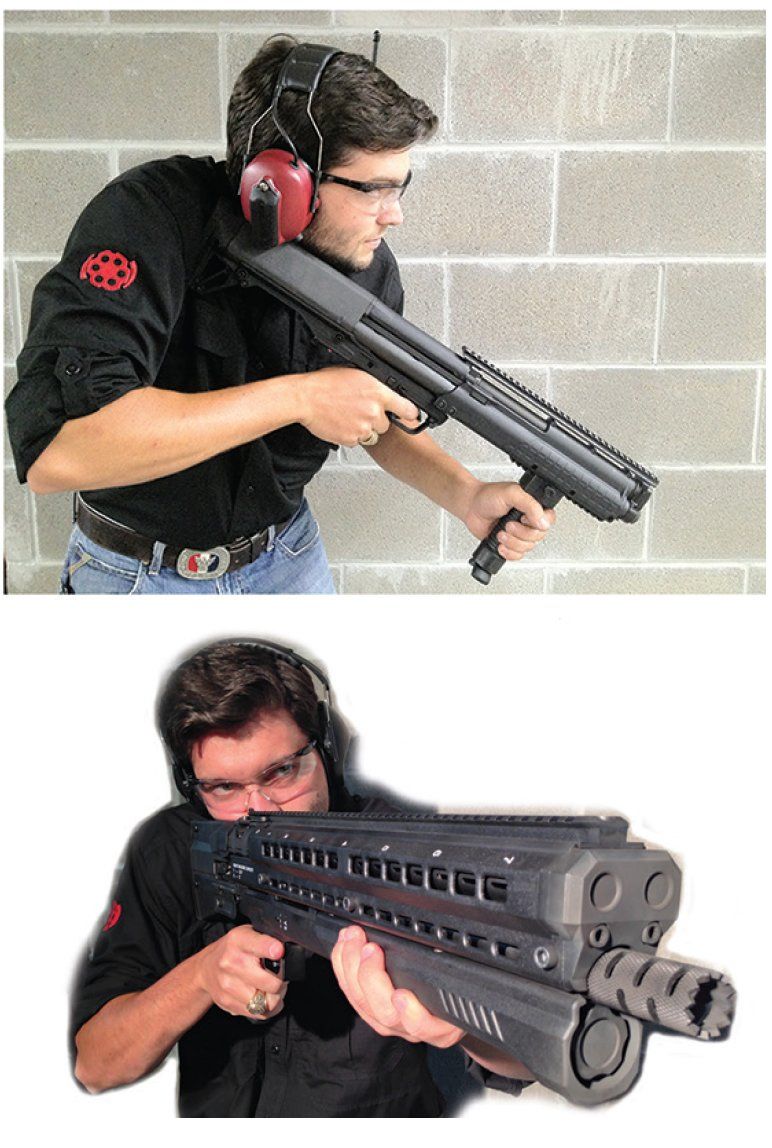
Yes, it was curious because of the very different mechanisms of the shotguns, with the similarity being the appearance of multiple barrels. Ralph Winingham was pretty clear that he knew the DP-12 was not a clays gun, but just as the Silver Ptarmigan side-by-side would not be the best choice for self defense, he still reviewed it for that use, just as he did the others. A head-to-head of the KSG, UTAS, and DP-12 will probably have to wait because we’ve now tested all three, albeit separately. We tested four high-capacity 12-gauge shotguns in the November 2012 issue: the Akdal Arms MKA 1919 3-inch 12 Gauge, $799; the Kel-Tec KSG 3-inch 12 Gauge, $1075; the Saiga IZ-107 12 Gauge, $640; and a Red Jacket Saiga RTS-SBS-12 Short-Barrel 12 Gauge, $1939. The Saiga 12 gauge was the winner, with our shooters calling it “a hoss that’s affordable.” Of the KSG (top photo, below), we said, “On the second gun, we had only one failure to feed after shooting several hundred additional rounds. Because it’s a pump, it doesn’t require the same level of maintenance as gas systems on the semi-autos do, and it will shoot and cycle just about anything of any power level you stuff in it, unlike the Saiga. We didn’t like that the KSG ejects spent shells straight down into your pump arm, and we learned that we preferred working it with a grip.” Of the UTS-15 (bottom photo below) reviewed in the June 2013 issue, we said, “If you have already purchased a UTS-15, it appears that UTAS is performing warranty work on guns that are having problems under the one-year warranty. So, our recommendation is to wait this one out and let the non-Gun Tests readers be the beta testers on the UTS-15.” — Todd Woodard
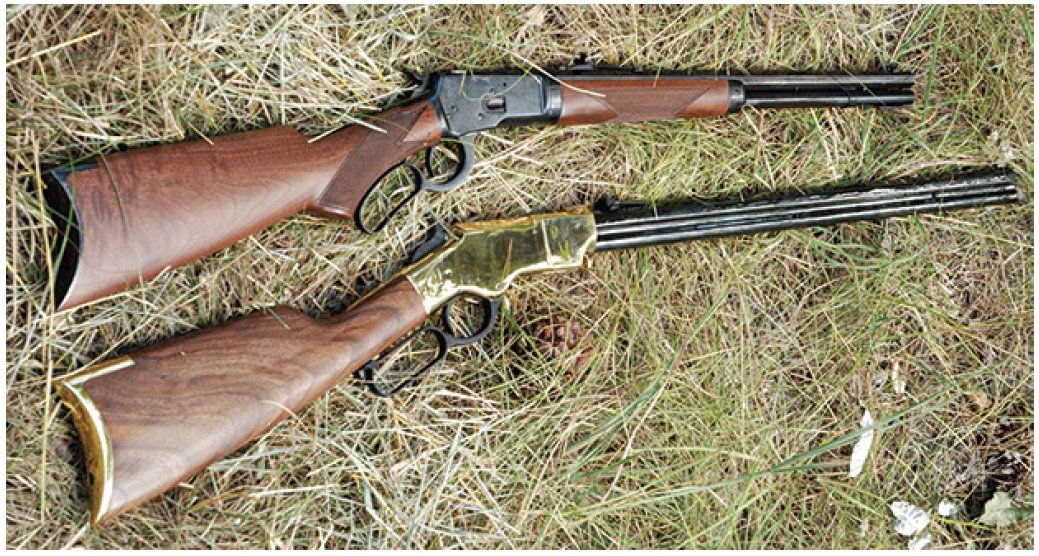
Leverguns: Two 44-40s Take Us
Way Back,” October 2015
I enjoyed your evaluation of the Henry versus Winchester Model 92. I own similar lever guns. I have never fired an original Henry (44 Rimfire ammo is hard to find), but I do own and fire an Italian copy. I even have the pouch and speed loaders for mine, as used in the War Between the States. I also have an original and a copy of the 1873 model and an original and copy of the 92. You mentioned the weight and balance differences, but then you are comparing a rifle to a carbine and designs that are three decades apart. Your caution about loading the Henry is totally correct; never let the follower slip, as it can drive the bullet deeply into the brass or even set them off. I find that lead bullets may be crimped tighter than the metal-jacket bullets, and lead bullets are often much more accurate, especially in originals where the bore size varies. My original rifle in 44 WCF requires a 0.434-inch-diameter bullet or a hollow-based bullet to shoot tight groups. All of my 44-40 long guns will shoot about 2 inches at a hundred yards from a bench, using lead that fits, and when my old eyes are doing a decent job. Henry Rifles is known for its high polish and fancy looks, much like 1950s cars had a lot of chrome. Too bad about the sharp edges being rounded on the barrel. My Italian rifle left them sharp.
My advice would be, if you want to look cool at the range, get a Henry. If you wish to use one of these rifles for home defense, hunting, or long-range shooting, get a ’92. They are much stronger (designed by Browning to handle higher pressure and last forever) and can handle pressure that would kill a Henry. Before all the lawsuits, the ammo companies used to produce high-pressure loads to be used in the 92 only, and they were popular with lawmen. I really like these tests on the older arms — they were once state-of-the-art and high-tech firearms, and it’s interesting to see how they hold up hundreds of years later. — Major Charlie
Escort Gladius vs. Remington870 Pump,” September 2015
I was very pleased to see that you honored my request to test the Legacy Escort Gladius Shotgun in the September issue, especially with the Center Mass laser from LaserLyte. Seams like it fared pretty well again the great old 870. I am however a little curious as to why you would test the Gladius against the Remington 870 pump. Since the Escort is available in a pump as well as a semi, would it not have been a better comparison with the 870? Great test regardless. Keep up the great work.— Carl
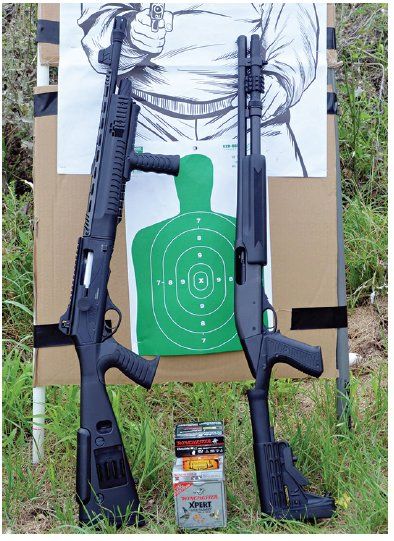
Hey Carl: It’s always a balancing decision about how to frame the test, and we often get questions about whether one mechanism is better than the other. The 870 pumpgun is the gold standard for many folks who are considering a home-defense choice, so it allowed Ralph Winingham to delve into both the Gladius itself and the semi-auto vs. pumpgun debate. — tw
Re “Firing Line,” October 2015
First, let me say what a great magazine Gun Tests is. In the October Firing Line section, you had a response about the Taurus Millennium’s recent legal troubles, and what a gun owner should do if we owned one of the affected pistols. Your reply was to get it fixed under the terms off the recall. Well, that will be nice if it happens. My experience with the company suggests that might not be a simple matter.
I had a 24/7 that needed rubber grips. I could not buy them. I had to send in the gun and have it fixed under the lifetime warranty. After they received it, I got a call telling me it was not repairable, and they would have to send me a new one under the warranty. Okay, fine, I told them I also had a PT 111 Millennium, and they asked for me to send that in for inspection, also informing me of the recall, so I did. I was told that one is not repairable also, and I would get another gun comparable to the PT 111 in six to 10 weeks. It has been more than 4 months, and when I call to check on the status of both guns, they tell me they are on back order and there is no estimated delivery date for either of my free replacement guns. So good luck on getting it fixed under the recall anytime soon. I purchased another carry sidearm to replace the 24/7. A lifetime warranty is useless if they never send the gun back.— Jim
Hey Jim: Thanks for letting us know about these troubles. — tw






























